In the second game of the Match, World Champion Ju Wenjun played with the white pieces. Despite this advantage, Lei Tingjie once again seized the initiative and put pressure on Ju. However, the Women’s World Champion managed to hold and secure a draw
It wasn’t just the colours that changed today—following yesterday’s game, Lei Tingjie requested to change her chair. This request may hold significance, as Ding Liren, in his match for the title of World Champion, tried and changed several chairs, which turned out to be a positive sign for him.
The first move ceremony was made by KK Chan, President of the Hong Kong Chess Federation and Xu Qi, Deputy Director of Shanghai Sports Bureau.

Ju opened with her standard move 1.d4. In the Tarrasch defence, both sides played steadily, but Lei gradually took over the initiative with active pawn pushes on both flanks. Despite the position being roughly even, Black was the side with more chances to play for a victory.
With 23…b4 Lei began an advance on the queenside which threatened to end with her rook getting down to the second rank and putting significant pressure on White. Ju found the best way to counter but she was in an uncomfortable position, under pressure, reminiscent of the first game of the match.
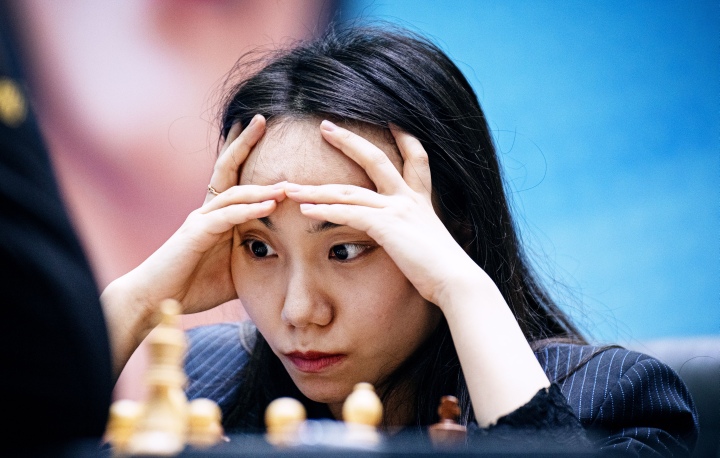
However, Lei was in time trouble and had 15 minutes on the clock to make more than 15 moves to reach the first time control. With the clock ticking and Ju’s skilful response, Black’s initiative failed to materialize into a tangible advantage. Subsequently, piece exchanges occurred on the board, leading to an even bishop and rook endgame by move 34.
After 40 moves and three and a half hours of play, the two agreed on a draw. The score is now 1:1.
Another uncomfortable day for Ju as she was again on the defensive side, despite playing with white pieces. In the post-game interview, she acknowledged being under more pressure saying “White had to play precisely” to hold.
At the post-game press conference, an interesting question came from Deputy Press Officer Gu Xiaobing. She asked which player the contenders would like to meet at the board. Ju Wenjun said she wants to play younger Ding Liren, whom she can beat, while Lei Tingjie would choose to play against Carlsen at any time.

Friday will be the first rest day of the Match. As both sides recover and reflect, Ju will need to think more about how far she can continue playing defence, while Lei will need to reconsider how to push herself further to convert an edge into a victory.
Here follows a closer look at the second game of the match:
Unlike her counterpart in the first game, Ju Wenjun played her usual opening move 1.d4 to which Lei Tingjie responded with the Tarrasch Defence. The game saw a topical line that has been extensively tested by the elite players.
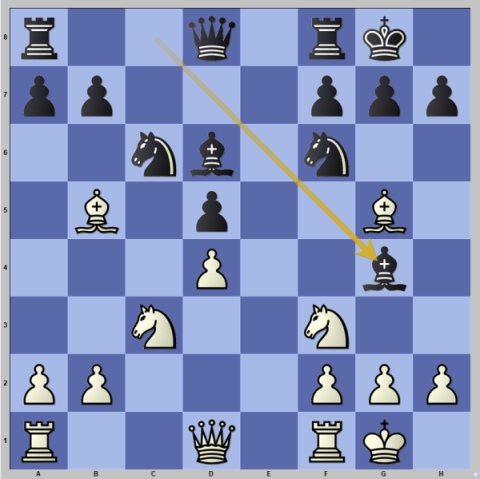
10…Bg4 Lei demonstrated a good opening preparation. This move is more precise than the immediate 10…Be6. As Grandmaster Alik Gershon put it, the idea behind this continuation was “forcing White to return the b5-bishop to e2, moving it to a worse position, and then she went for Be6”.
The opponents followed a recent game Mamedyarov – Nepomniachtchi (Zagreb, 2022) up to certain point, but Lei deviated first.
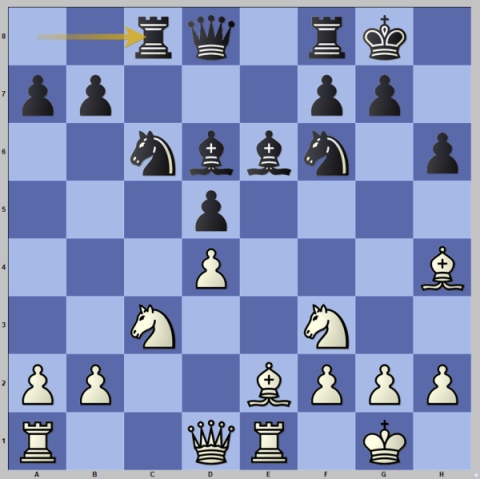
13…Rc8 After this move, both players started spending more time on the clock, suggesting both were out of their preparation.
14.a3 A more natural choice was Qd2, connecting the rooks. At this stage of the game, Ju proceeded somewhat sluggishly and allowed Lei to become the more active side.
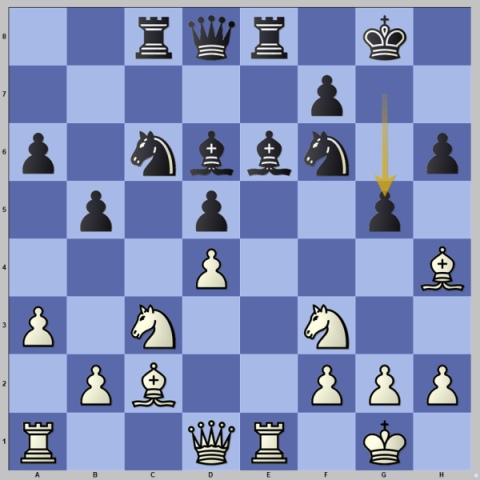
17…g5 Played by Lei after six minutes. After expanding on the queenside, Lei pushed on the kingside. The thematic sacrifice 18.Nxg5 hxg5 19.Bxg5 doesn’t work here as Black consolidates with 19…Kg7 followed by Rh8.
By move 20 GM Alik Gershon concluded: “With a series of energetic moves, Lei has taken over the initiative”.
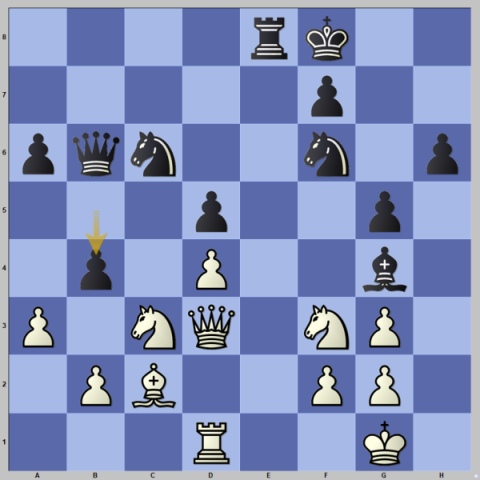
23…b4. Black has now started her sharp offensive on White, but Ju’s position – although slightly weaker – is definitely holdable. After 24.Na4 Qb5 offering an exchange of queens and threatening to get the rook on e2, Ju spent a lot of time thinking and lost the clock advantage she had over Lei but found the best defence.
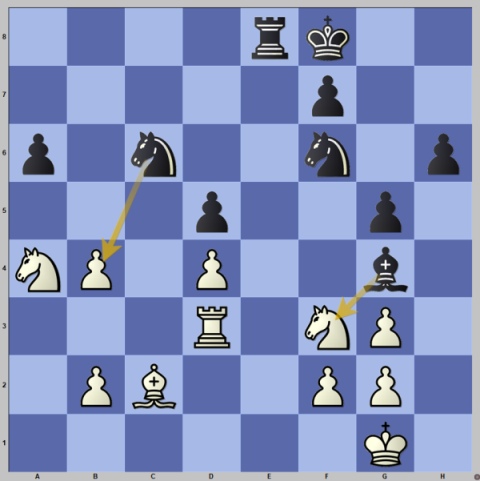
26…Nxb4 Black had another interesting option 26…Bxf3. Lei again started falling behind on time at this point. After 27.Rd2 was played, Lei had 15 minutes on the clock, while Ju had just under 30 minutes. With 13 moves to the first time control, Lei needed to be mindful of her time problems. A couple of moves down the road, the challenger missed her last chance to pose some problems for White.
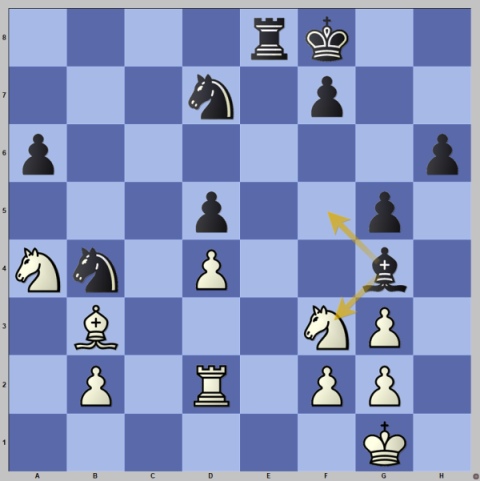
28…Bf5 According to chess engines, the endgame emerging after 28…Bxf3 is slightly better for Black, although with an accurate defence White should hold. As played, Ju timely defused the tension and forced massive exchanges.
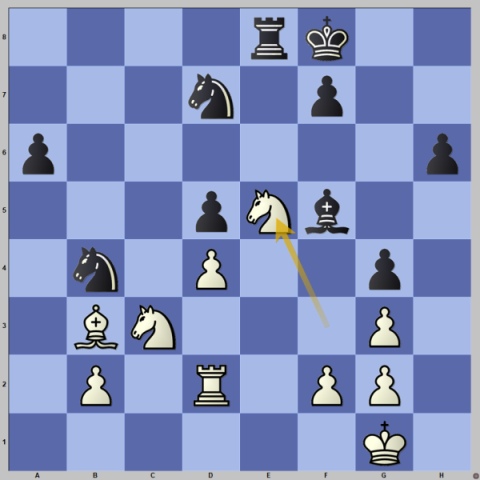
After 30.Ne5 Nxe5 31.dxe4 Rxe5 32.Nxd5 Nxd5 33.Bxd5 Re1+ 34.Kh2 a5, it came down to a drawn rook and bishop endgame.
Both players knew this was a draw, but the rules forbid them from offering a draw before move 40, so they continued playing and shook hands right after reaching the time control.
Text: Milan Dinic
Photos: Stev Bonhage
Official website: womenworldchampionship.fide.com/
About the Match
The match will take place in two Chinese cities, where each of the contestants comes from. The first half of the match will be in Shanghai, while the second half takes place in Chongqing.
The match will consist of 12 games of classical chess. The payers will have 90 minutes for the first 40 moves, followed by 30 more minutes for the rest of the game, plus a 30-second increment per move starting on move one.
Players cannot offer a draw before they reach the 41st move.
In case of a tie, there will be the following tiebreaks:
Four games with a 25+10 time control.
Two games with a 5+3 time control.
Two more games with a 5+3 time control.
One game with a 3+2 time control, until a winner is determined.
The prize fund is €500,000, with €300,000 going to the winner and the remaining €200,000 to the runner-up.
If the outcome of the match is decided upon tiebreaks, the winner will take €275,000, while the runner-up will receive €225,000.








